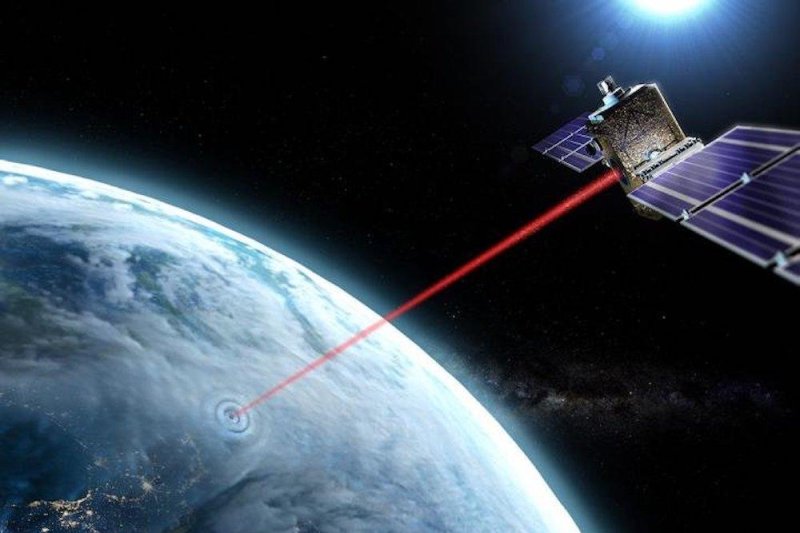New laser technology can superheat the air and create a cloud-blasting shockwave. Photo by UNIGE/Xavier Ravinet
Oct. 18 (UPI) -- To improve the efficiency and security of long-range information transmission, scientists want to phase out radio communication satellites and introduce laser-powered technology.
But first, researchers must find a way to bypass cloud cover. Laser beams are unable to travel through clouds and fog.
Radio waves have significant drawbacks. Their waves can carry only so much information, and radio frequencies are easily intercepted. Lasers can carry a lot more information, and they're also more secure.
"It's a new technology that is full of promise," Jean-Pierre Wolf, professor of physics at the University of Geneva, said in a news release. "The very short wavelengths can carry 10,000 times more items of information than radio frequency, and there aren't any limits to the number of channels. Lasers can also be used to target a single person, meaning it's a highly secure form of communication."
But a technology that doesn't work when the weather is bad isn't ideal. Currently, laser-based communication systems bypass clouds by routing the beams to ground stations free of cloud cover. The level of coordination required, however, is problematic.
"This critical issue is currently addressed only by the multiplication of networked ground stations, which is complex and expensive," scientists explained in their new paper on the subject, published this week in the journal Optica.
Researchers in Switzerland think the solution is more lasers -- not more ground stations.
"We want to get around the problem by making a hole directly through the clouds so that the laser beam can pass through," Wolf said.
Wolf and his research partners have developed a laser capable of heating air to 1,500 degrees Celsius. A shockwave produced by the laser propels water droplets sideways, creating a tunnel and allowing the accompanying data-carrying laser beam to travel through the cloud uninhibited.
"All you then need to do is keep the laser beam on the cloud and send the laser that contains the information at the same time," said researcher Guillaume Schimmel. "It then slips into the hole through the cloud and allows the data to be transferred."
Scientists have yet to test the laser on real clouds. But the laser has proved effective when tested on artificial clouds. For testing, researchers used synthetic clouds 10,000 times more dense than those found in the atmosphere. The next step is to test the laser on thicker clouds.
"We're talking about possible global implementation by 2025, and our idea is to be ready and to allow countries that are overcast to have this technology," Wolf said.















